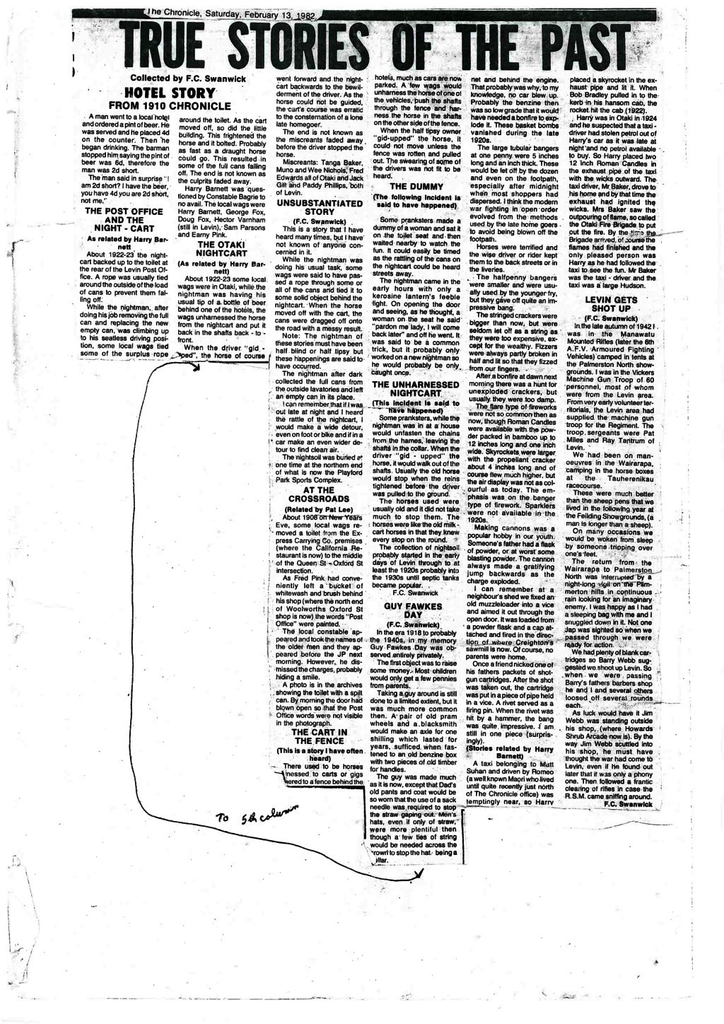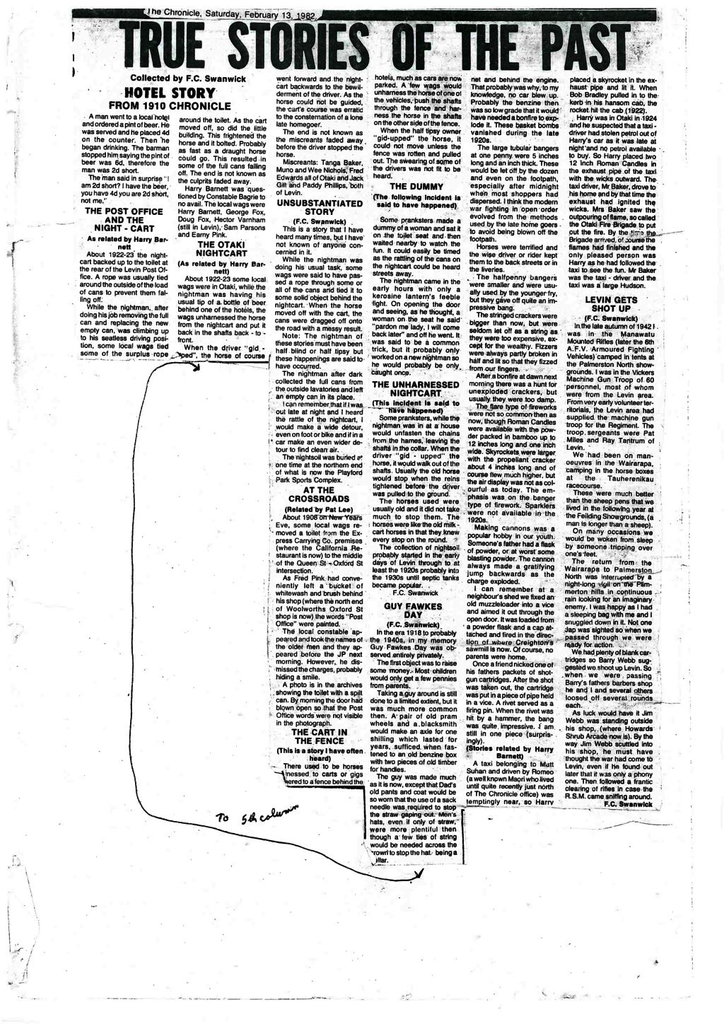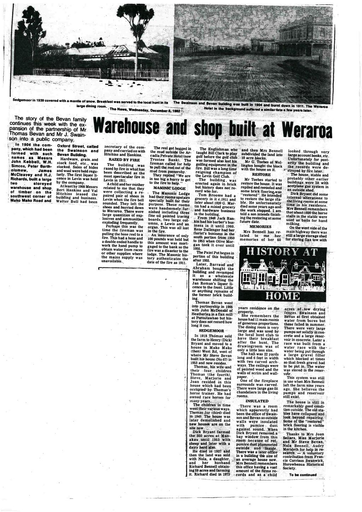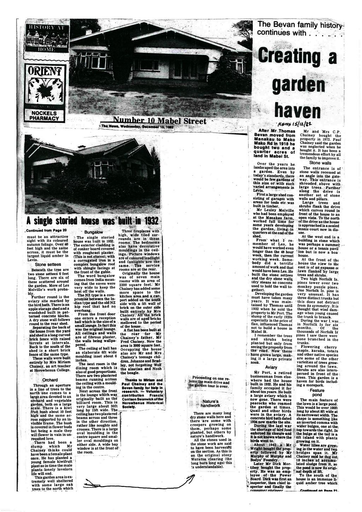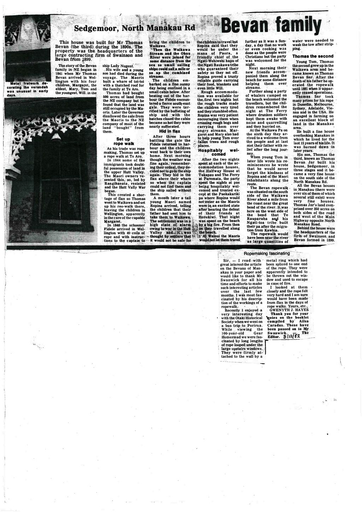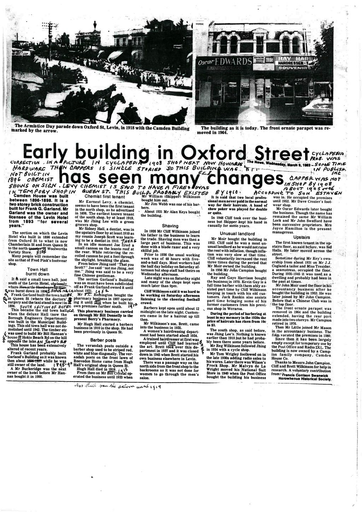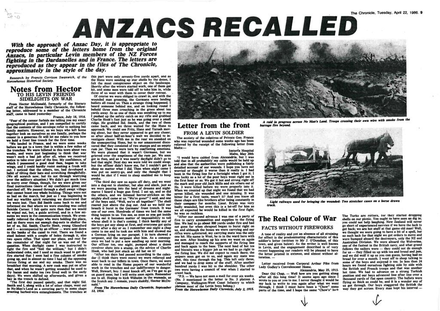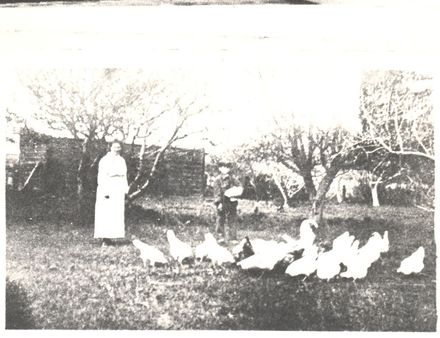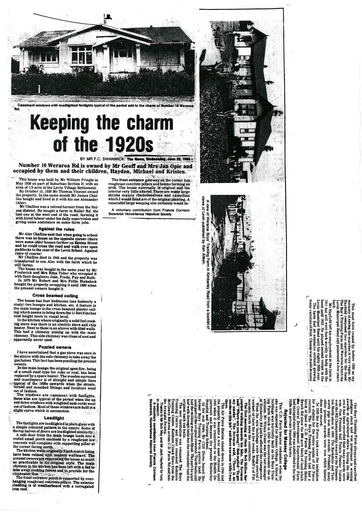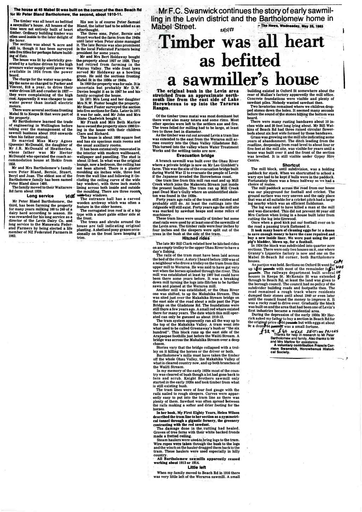True stories of the past
- Description
Hotel Story from 1910 Chronicle
A man went to a local hotel and ordered a pint of beer. He was served and he placed 4d on the counter. Then he began drinking. The barman stopped him saying the pint of beer was 6d; therefore the man was 2d short. The man said in surprise “I’m 2d short? I have the beer, you have 4d you are 2d short, not me.”
The Post Office and the Night - Cart
As related by Harry Barnett.
About 1922-23 the night-cart backed up to the toilet at the rear of the Levin Post Office. A rope was usually tied around the outside of the load of cans to prevent them falling off.
While the nightman, after doing his job removing the full can and replacing the new empty can, was climbing up to his seatless driving position, some local wags tied some of the surplus rope around the toilet. As the cart moved off, so did the little building. This frightened the horse and it bolted. Probably as fast as a draught horse could go. This resulted in some of the full cans falling off. The end is not known as the culprits faded away.
Harry Barnett was questioned by Constable Bagrie to no avail. The local wags were Harry Barnett, George Fox, Doug Fox, Hector Varnham (still in Levin), Sam Parsons and Earny Pink.
The Otaki Night – Cart
As related by Harry Barnett.
About 1922-23 some local wags were in Otaki, while the nightman was having his usual tip of a bottle of beer behind one of the hotels, the wags unharnessed the horse from the nightcart and put it back in the shafts back to front.
When the driver “gid-upped” the horse of course went forward and the nightcart backwards to the bewilderment of the driver. As the horse could not be guided, the cart’s course was erratic to the consternation of a lone, late homegoer.
The end is not known as the miscreants faded away before the driver stopped the horse. Miscreants: Tanga Baker, Muno and Wee Nichols, Fred Edwards all of Otaki and Jack Gill and Paddy Phillips, both of Levin.
Unsubstantiated Story
(F.C.Swanwick.)
This is a story that I have heard many times, but I have not known of anyone concerned in it.
While the nightman was doing his usual task, some wags were said to have passed a rope through some or all of the cans and tied it to some solid object behind the nightcart. When the horse moved off with the cart, the cans were dragged off onto the road with a messy result.
Note: The nightman of these stories must have been half blind or half-tipsy but these happenings are said to have occurred.
The nightman after dark collected the full cans from the outside lavatories and left an empty can in its place.
I can remember that if I was out late at night and I heard the rattle of the nightcart, I would make a wide detour, even on foot or bike and if in a car, make an even wider detour to find clean air.
The nightsoil was buried at one time at the northern end of what is now the Playford Park Sports Complex.
At the Crossroads
(Related by Pat Lee).
About 1908 on New Years Eve, some local wags removed a toilet from the Express Carrying Co. premises (where the California Restaurant is now) to the middle of the Queen St-Oxford St intersection.
As Fred Pink had conveniently left a bucket of whitewash and brush behind his shop (where the north end of Woolworths Oxford St shop is now) the words “Post Office” were painted.
The local constable appeared and took the names of the older men and they appeared before the JP next morning. However, he dismissed the charges, probably hiding a smile.
A photo is in the archives showing the toilet with a spilt can. By morning the door had blown open so that the Post Office words were not visible in the photograph.
The Cart in the Fence
(This is a story I have often heard).
There used to be horses harnessed to carts or gigs tethered to a fence behind the hotels, much as cars are now parked. A few wags would unharness the horse of one of the vehicles, push the shafts through the fence and harness the horse in the shafts on the other side of the fence.
When the half tipsy owner “gid-upped” the horse, it could not move unless the fence was rotten and pulled out. The swearing of some of the drivers was not fit to be heard.
The Dummy
(The following incident is said to have happened).
Some pranksters made a dummy of a woman and sat it on the toilet seat and then waited nearby to watch the fun. It could easily be timed as the rattling of the cans on the nightcart could be heard streets away.
The nightman came in the early hours with only a kerosene lantern’s feeble light. On opening the door and seeing, as he thought, a woman on the seat he said “pardon me lady, I will come back later” and off he went. It was said to be a common trick, but it probably only worked on a new nightman, so he would probably be only caught once.
The Unharnessed Nightcart
(This incident is said to have happened.)
Some pranksters, while the nightman was in at a house would unfasten the chains from the hames, leaving the shafts in the collar. When the driver “gid-upped” the horse, it would stop when the reins tightened before the driver was pulled to the ground.
The horses used were usually old and it did not take much to stop them. The horses were like the old milk-cart horses in that they knew every stop on the round.
The collection of nightsoil probably started in the early days of Levin through to at least the 1920s and probably into the 1930s until septic tanks became popular. (F.C.Swanwick)
Guy Fawkes Day
(F.C.Swanwick)
In the era 1918 to probably the 1940s, in my memory Guy Fawkes Day was observed entirely privately.
The first object was to raise some money. Most children would only get a few pennies from parents.
Taking a guy around is still done to a limited extent, but it was much more common then. A pair of old pram wheels and a blacksmith would make an axle for one shilling which lasted for years, sufficed when fastened to an old benzine box with two pieces of old timber for handles.
The guy was made much as it is now, except that Dad’s old pants and coat would be so worn that the use of a sack needle was required to stop the straw gaping out. Men’s hats, even if only of straw, were more plentiful then though a few ties of string would be needed across the crown to stop the hat being a collar.
The large tubular bangers at one penny were 5 inches long and an inch thick. These would be let off by the dozen and even on the footpath, especially after midnight when most shoppers had dispersed. I think the modern war fighting in open order evolved from the methods used by the late home goers to avoid being blown off the footpath.
Horses were terrified and the wise driver or rider kept them to the back streets or in the liveries.
The halfpenny bangers were smaller and were usually used by the younger fry, but they gave off quite an impressive bang.
The stringed crackers were bigger than now, but were seldom let off as a string as they were too expensive, except for the wealthy. Fizzers were always partly broken in half and lit so that they fizzed from our fingers.
After a bonfire, at dawn next morning there was a hunt for unexploded crackers, but usually they were too damp.
The flare type of fireworks were not so common then as now, though Roman Candles were available with the powder packed in bamboo up to 12 inches long and one inch wide. Skyrockets were larger with the propellant cracker about 4 inches long and of course flew much higher, but the air display was not as colourful as today. The emphasis was on the banger type of firework, Sparklers were not available in the 1920s.
Making cannons was a popular hobby in our youth. Someone’s father had a flask of powder, or at worst some blasting powder. The cannon always made a gratifying jump backwards as the charge exploded.
I can remember at a neighbour’s shed we fixed an old muzzleloader into a vice and aimed it out through the open door. It was loaded from a powder flask and a cap attached and fired in the direction of where Creighton’s sawmill is now. Of course, no parents were home.
Once a friend nicked one of his father’s packets of shotgun cartridges. After the shot was taken out, the cartridge was put in a piece of pipe held in a vice. A rivet served as a firing pin. When the rivet was hit by a hammer, the bang was quite impressive. I am still in one piece (surprisingly).
Stories related by Harry Barnett
A taxi belonging to Matt Suhan and driven by Romeo (a well known Maori who lived until quite recently just north of The Chronicle office) was temptingly near, so Harry placed a skyrocket in the exhaust pipe and lit it. When Bob Bradley pulled in to the kerb in his hansom cab, the rocket hit the cab (1022).
Harry was in Otaki in 1924 and he suspected that a taxi-driver had stolen petrol out of Harry’s car as it was late at night and no petrol was available to buy. So Harry placed two 12 inch Roman Candles in the exhaust pipe of the taxi with the wicks outward. The taxi driver, Mr Baker, drove to his home and by that time the exhaust had ignited the wicks. Mrs Baker saw the outpouring of flame, so called the Otaki Fire Brigade to put out the fire. By the time the Brigade arrived, of course the flames had finished and the only pleased person was Harry as he had followed the taxi to see the fun. Mr Baker was the taxi-driver and the taxi was a large Hudson.
Levin Gets Shot Up
(F.C.Swanwick)
In the late autumn of 1942, I was in the Manawatu Mounted Rifles (later the 6th A.F.V.Armoured Fighting Vehicles) camped in tents at the Palmerston North showgrounds. I was in the Vickers Machine Gun Troop of 60 personnel, most of who were from the Levin area. From very early volunteer territorials, the Levin area had supplied the machine gun troop for the Regiment. The troop sergeants were Pat Miles and Ray Tantrum of Levin.
We had been on manoeuvres in the Wairarapa, camping in the horse boxes at the Tauherenikau racecourse.
These were much better than the sheep pens that we lived in the following year at the Feilding Showgrounds, (a man is longer than a sheep).
On many occasions we would be woken from sleep by someone tripping over one’s feet.
The return from the Wairarapa to Palmerston North was interrupted by a night-long vigil on the Plimmerton hills in continuous rain looking for an imaginary enemy. I was happy as I had a sleeping bag with me and I snuggled down in it. Not one Jap was sighted so when we passed through we were ready for action.We had plenty of blank cartridges so Barry Webb suggested we shoot up Levin. So when we were passing Barry’s father’s barbers shop he and I and several others loosed off several rounds each.
As luck would have it Jim Webb was standing outside his shop, (where Howard’s Shrub Arcade now is). By the way Jim Webb scuttled into his shop, he must have thought the war had come to Levin, even if he found out later that it was only a phoney one. Then followed a frantic cleaning of rifles in case the R.S.M. came sniffing around.
Identification
- Date
- February 13, 1982
Taxonomy
- Community Tags

